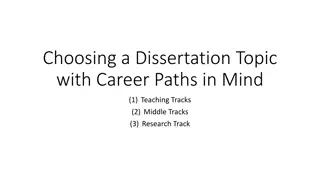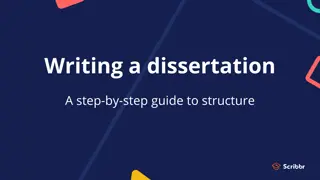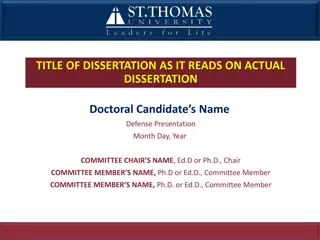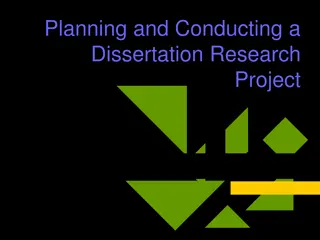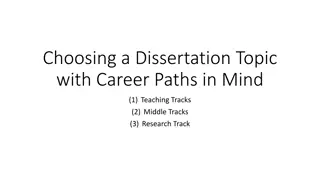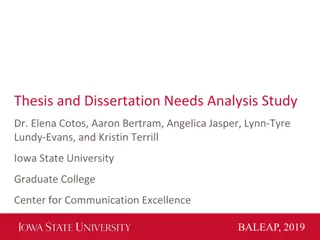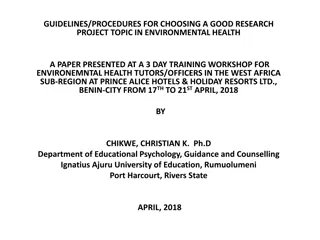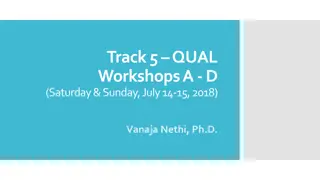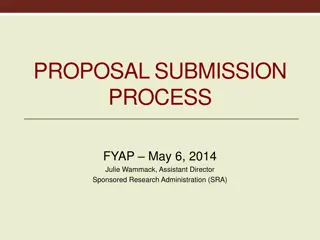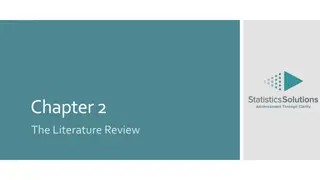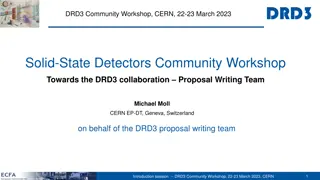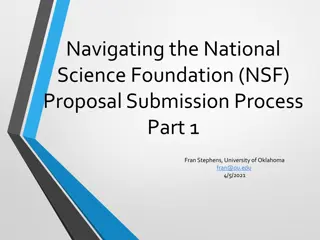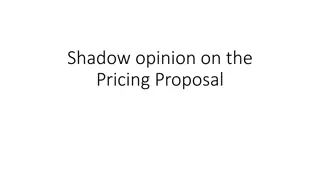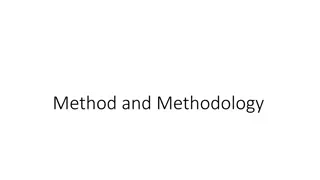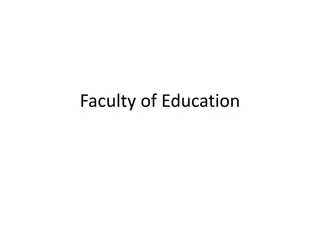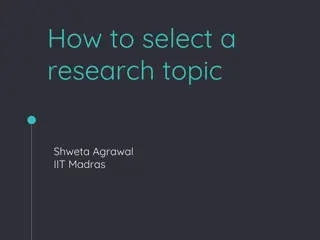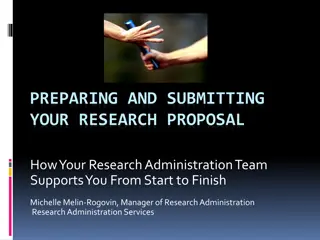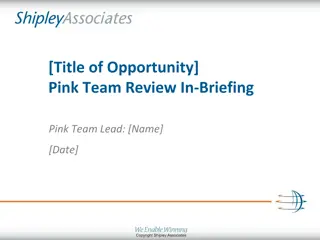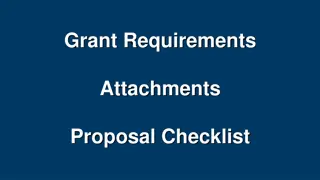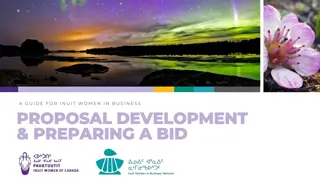Navigating the Dissertation Proposal Process: From Choosing a Topic to Research Methodologies
Delve into the dissertation proposal journey with insights on selecting a research topic, conducting literature reviews, crafting research questions, developing a conceptual framework, and exploring research designs and methodologies. Learn how to let your research question emerge from the literature and structure it effectively for your dissertation. Uncover the essential elements of research, including epistemology, theoretical perspectives, methodology, and methods, to guide your data collection and analysis strategies.
- Dissertation proposal
- Research topic selection
- Literature review
- Conceptual framework
- Research methodologies
Download Presentation

Please find below an Image/Link to download the presentation.
The content on the website is provided AS IS for your information and personal use only. It may not be sold, licensed, or shared on other websites without obtaining consent from the author. Download presentation by click this link. If you encounter any issues during the download, it is possible that the publisher has removed the file from their server.
E N D
Presentation Transcript
Demystifying the Dissertation Proposal Choosing a Topic, Finding the Literature and Writing it Up, the Conceptual Framework and Question, the Research Design, and Research Methodologies { Kimberly L. King-Jupiter, Ph.D. Dean and Professor Alethea Fletcher Hampton, Ed.D. Assistant Dean and Assistant Professor
Brief introductions Goal of Research C. Wright Mills (1959) Choosing a Topic Jumping into the Literature Review The Question The Conceptual Framework Four Elements of Research Michael Crotty Overview of Research Methodologies/Methods Research Designs Practice Scenarios Workshop Agenda
. . . [T]he most fruitful distinction with which the sociological imagination works is between the personal troubles of milieu and the public issues of social structure (p. 350) C. Wright Mills (1959)
Topics are broad, but will allow you to examine and select a sub-topic for your research. Choosing a Topic
Helpful Internet-based Tools for Research Academic Search Premier Dissertations and Thesis EbscoHost Education Source ERIC Google Scholar Lexis Nexis Academic NIH.gov Psych Info West Law Beginning your Literature Review
Do allow your research question to emerge from the literature. Do not create a question that you can answer with yes or no Do not select a research methodology before you have a research question. Do select a question that you can answer during the time you have and the resources at your disposal. Structuring a Question
epistemology theoretical perspective methodology methods Four Elements of Research
What data do you need Where or who will you get your data from How will you collect your data What statistical processes or methods can you use on the data Decide how to present raw and processed data Check that the collected data makes sense with what you intend to do What is the Research Design?
Qualitative Research Quantitative Research Mixed-Methods Research Characteristics of the 3 Research Paradigms
Inductive or bottom up (uses more words, images, categories) Phenomenology Ethnography Case study research Grounded theory Historical research Qualitative Research Methods
Relies primarily on the collection of numerical data (basic building block are variables) Experimental Quasi-experimental Causal comparative Survey Descriptive Correlational Quantitative Research Methods
Quantitative and Qualitative Methods are mixed in one overall study Triangulation Embedded Explanatory Exploratory Mixed Methods Research
Two groups of students were tested to compare their speed working math problems. Each group was given the same problems. One group used calculators and the other group computed without calculators. 1. Independent Variable Dependent Variable Control Constant __________________________ __________________________ __________________________ __________________________ Variables independent, dependent, controls, and constants
Sponge Bob notices that his pal Gary is suffering from slimotosis, which occurs when the shell develops a nasty slime and gives off a horrible odor. His friend Patrick tells him that rubbing seaweed on the shell is the perfect cure, while Sandy says that drinking Dr. Kelp will be a better cure. Sponge Bob decides to test this cure by rubbing Gary with seaweed for 1 week and having him drink Dr. Kelp. After a week of treatment, the slime is gone and Gary s shell smells better. What was the initial observation? What is the independent variable? What is the dependent variable? What should Sponge Bob s conclusion be? What should Sponge Bob have done differently? Scientific Method
Smithers thinks that a special juice will increase the productivity of workers. He creates two groups of 50 workers each and assigns each group the same task (in this case, they re supposed to staple a set of papers). Group A is given the special juice to drink while they work. Group B is not given the special juice. After an hour, Smithers counts how many stacks of papers each group has made. Group A made 1, 587 stacks, and Group B made 2, 13 stacks. Identify the: Control Group Independent Variable Dependent Variable What should Smithers conclusion be? How could this experiment be improved? Identify the Controls and Variables
Lisa is working on a science project. Her task is to answer the question: Does Rogooti (which is a commercial hair product) affect the speed of hair growth? Her family is willing to volunteer for the experiment. Describe how Lisa would perform this experiment. Identify the control group, and the independent and dependent variables in your description.


